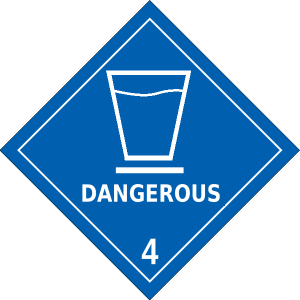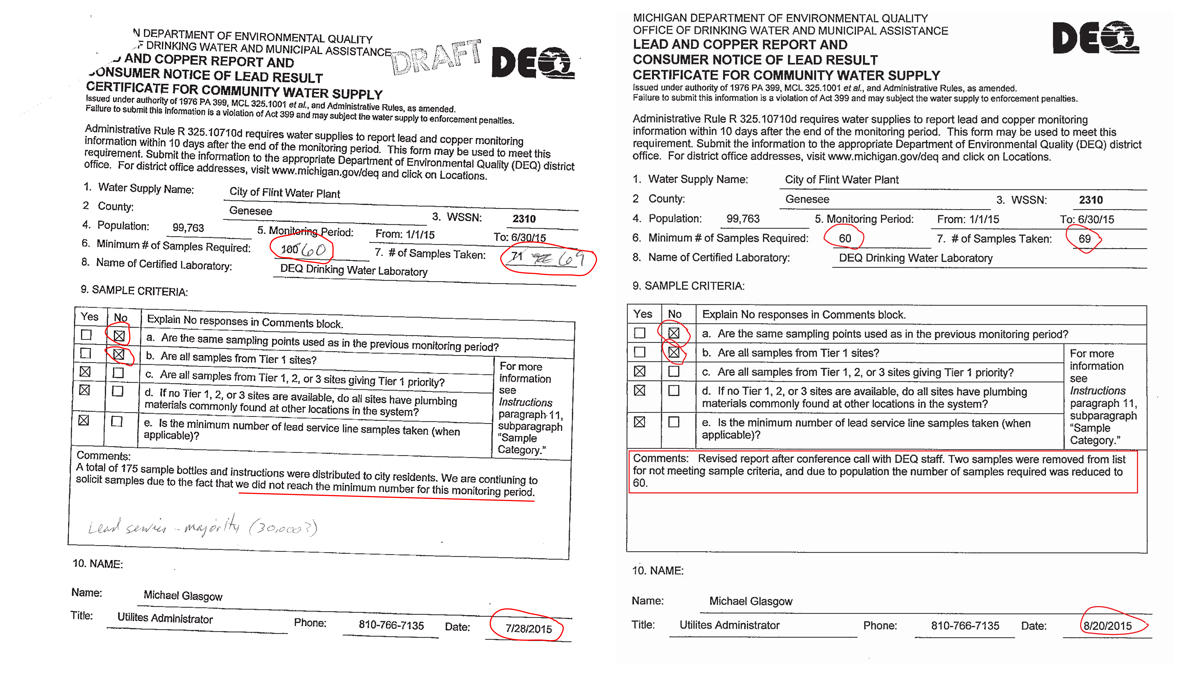 Four years ago in 2011, the city of Flint commissioned a report to investigate the use of the Flint River to supply water to the city. The report, which was sent to state officials in 2013 detailed the risk of lead leaching by the more corrosive river water and emphasized the need for phosphate corrosion control to prevent lead from entering the drinking water of Flint residents.
Four years ago in 2011, the city of Flint commissioned a report to investigate the use of the Flint River to supply water to the city. The report, which was sent to state officials in 2013 detailed the risk of lead leaching by the more corrosive river water and emphasized the need for phosphate corrosion control to prevent lead from entering the drinking water of Flint residents.
However, phosphate corrosion control was never included in the plan put together by the city public works department, a plan approved by the state Department of Environmental Quality. Why? That’s unclear and nobody is taking credit for it. However, Emergency Manager Darnell Earley signed off on the move to Flint River water (despite an offer to remain on water from the Detroit water system until their new pipeline to Lake Huron was built) and DEQ had the final say in the city’s water treatment plan making them ultimately culpable.
Fast forward to August of this year. Federal regulations require that a city the size of Flint must test the water in 100 homes deemed to be “worst-case-scenario”:
One way a city knows whether they have a lead problem is by federally mandated tests done under something called the “lead and copper rule.”A city is supposed to find out where citizens might be at most risk.
The city of Flint has something like 15,000 water service lines that contain lead. And many homes might also have lead pipes or lead solder in them.
So a city is supposed to identify those homes most at risk, and test the water coming out of those taps.
For a city like Flint with around 100,000 people, the requirement has been that they take at least 100 samples from homes like these, calculate the 90th percentile of those samples, and determine where they stand.
If their sampling shows that the 90th percentile calculation is above 15 parts per billion, the city has to take action.
However, according documents obtained by a FOIA request submitted by the Michigan ACLU and Marc Edwards, an expert on water treatment at Virginia Tech University, only 71 homes were tested and these weren’t even “worst-case-scenario” homes. After a draft report was assembled that indicated lead levels exceeded the threshold set by federal rules requiring action to prevent lead contamination, DEQ instructed city officials to drop two of the samples and changed the form to indicate only 60 samples were required:

Click image for a larger version
The two samples removed lowered the 90th percentile lead result to below the level required for action. The state claimed that one of the two samples was tossed out because the home used a water filter that could cause a lead reading that was too low. However, that particular sample was actually outrageously HIGH. In fact, it was the highest lead result in all of the 2015 testing at 104 parts per billion.
The person in charge of collecting the samples can’t explain why DEQ instructed him to drop the sample:
Mike Glasgow is with the city of Flint. He’s the guy in charge of collecting the water samples.Glasgow remembers including samples taken at one home that showed extremely high lead levels. A sample of Lee Anne Walters’ home turned up a result of 104 parts per billion – almost seven times the federally mandated limit.
“They instructed me to take it off the report,” says Glasgow. “I know she had taken some other samples and they had all the results too. I don’t know that I can give you a good enough answer to tell you why they decided to remove it from the report.”
The answer seems obvious. The state didn’t want to be involved in an expensive lead mitigation project that would likely have required replacing water service lines and other measures.
This outrageous situation boils down to this: state officials approved a plan for using Flint River water that was inadequate despite knowing the risks since 2013 and then, once lead began to show up in Flint residents’ water, they altered a report in violation of federal law that would have required action.
The poisoning of Flint residents by their own state government has lawmakers calling for an investigation. Both state Senate Democratic Leader Jim Ananich and Congressman Dan Kildee are calling for a federal investigation by the USEPA:
In separate letters to Gina McCarthy, administrator of the EPA, today, Oct. 21, the legislators asked for the federal review of the Michigan Department of Environmental Quality’s oversight of water treatment here. […]“It has become clear to me that unacceptable lead levels were a failure of government at every level,” Kildee’s letter says. “Despite evidence presented indicating the water quality was unsafe, repeated assurances were given by both the MDEQ and EPA that the water was safe to consume …
“In order to restore confidence, and to ensure that these failures never happen again, I believe that the EPA needs to conduct a thorough investigation into the causes of the water problems in Flint,” the letter continues. “The failure of government to provide safe drinking water to Flint is unacceptable, and there must be accountability.”
Ananich’s letter says several questions remain about the water sampling conducted by the city and tested by the state, including the location of sampling and instructions given to water customers to pre-flush their taps prior to testing, “resulting in lower lead level results.”
Congressman Kildee plans to meet with Regional EPA director Susan Hedman this week.
In the meantime, DEQ chief Dan Wyant replaced the department’s Office of Drinking Water and Municipal Assistance, Liane Shekter Smith, thowing Smith under the bus to protect his own job.
This story is a long way from being over. Perhaps the most shocking thing is that the story of a state government poisoning the residents one of its largest cities has received almost no national attention.
UPDATE: The USEPA has agreed to audit Michigan’s drinking water program:
In the wake of a public health crisis over high lead levels in water in some Flint homes, the U.S. Environmental Protection Agency has announced it will audit the state’s drinking water program.A Nov. 10 news release from the EPA says it will examine the Michigan Department of Environmental Quality’s “implementation of the Safe Drinking Water Act and related rules on lead and copper, total coliform, nitrates and ground water.”
The audit comes after requests for a federal investigation of Flint’s water crisis by U.S. Rep. Dan Kildee, D-Flint, and state Senate Minority Leader Jim Ananich, D-Flint.



